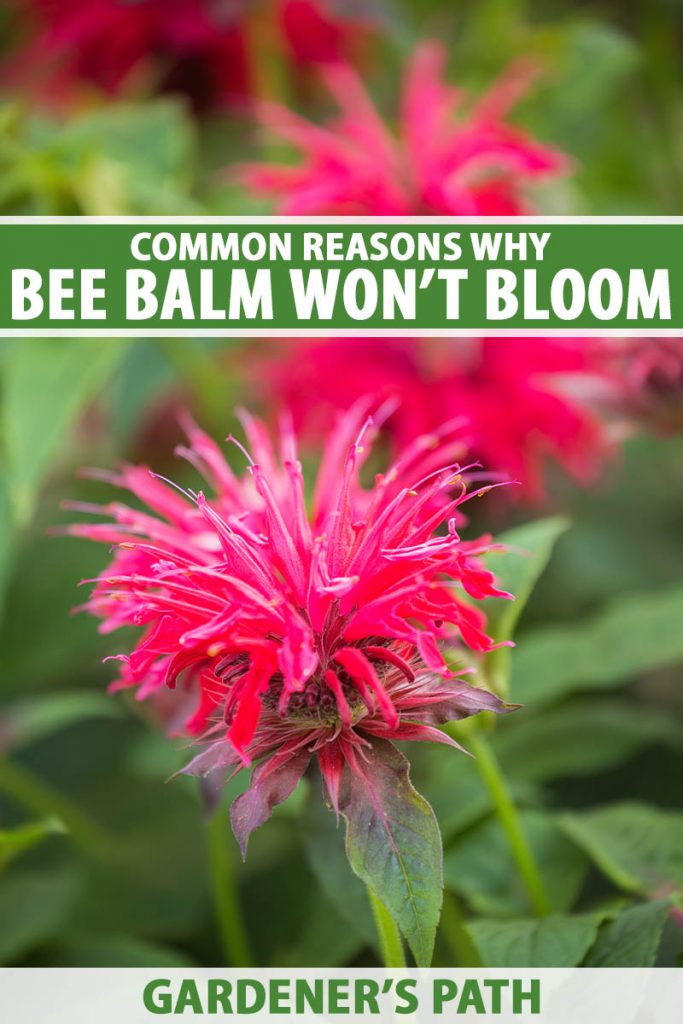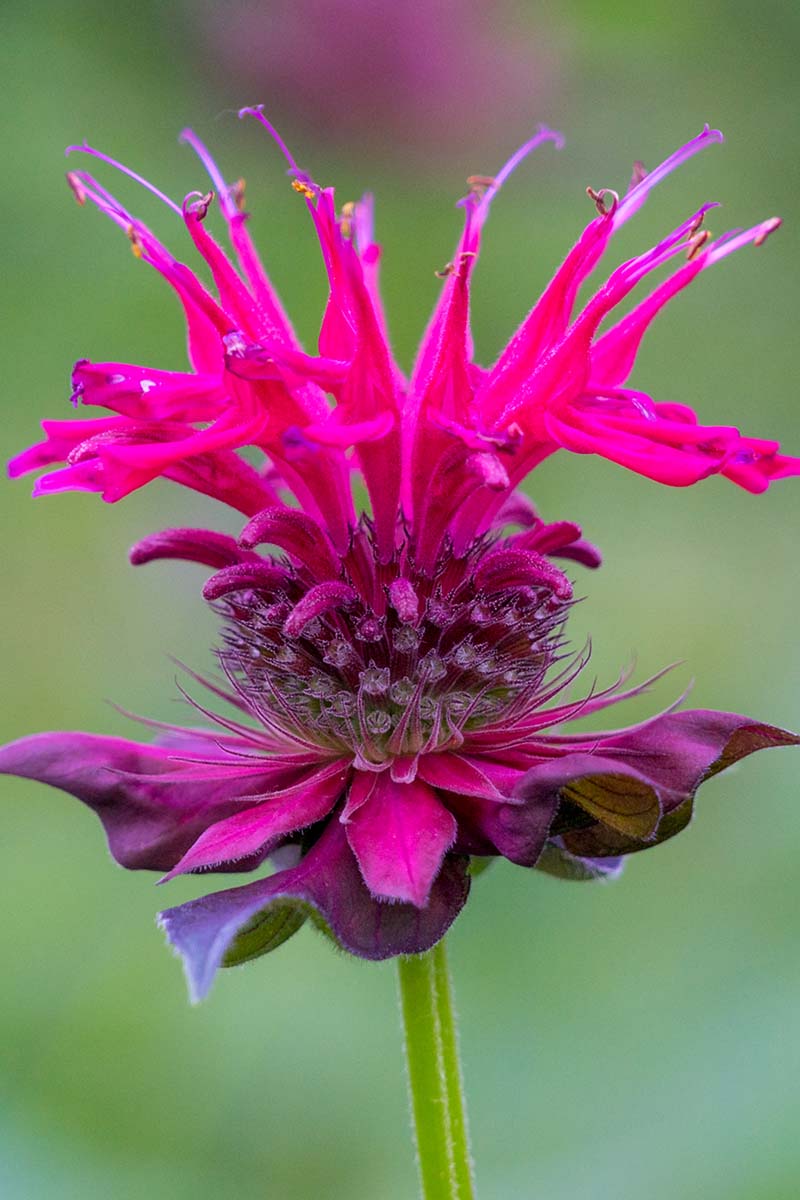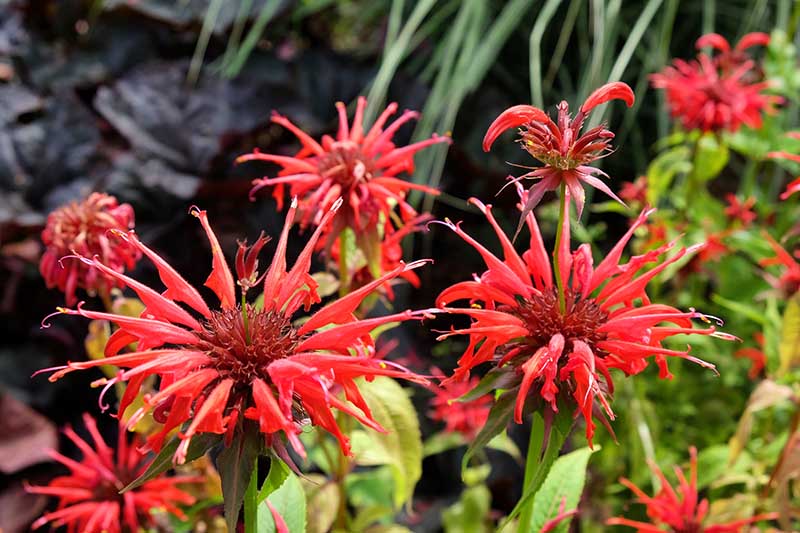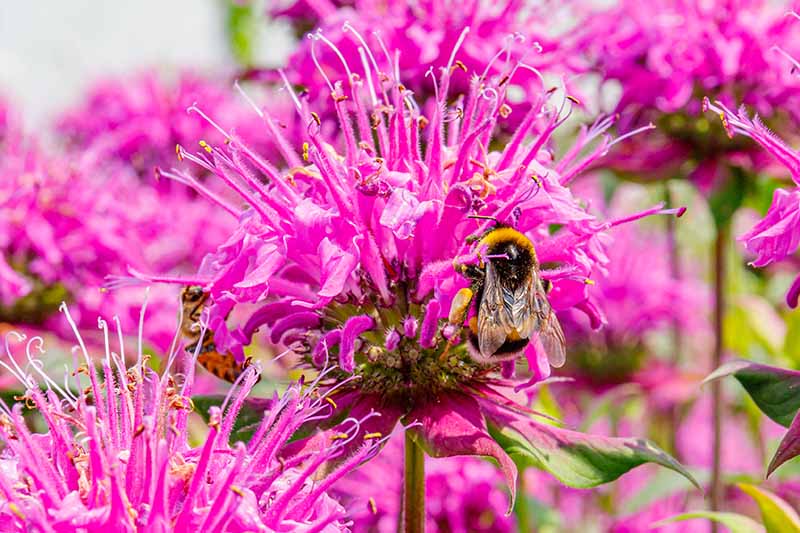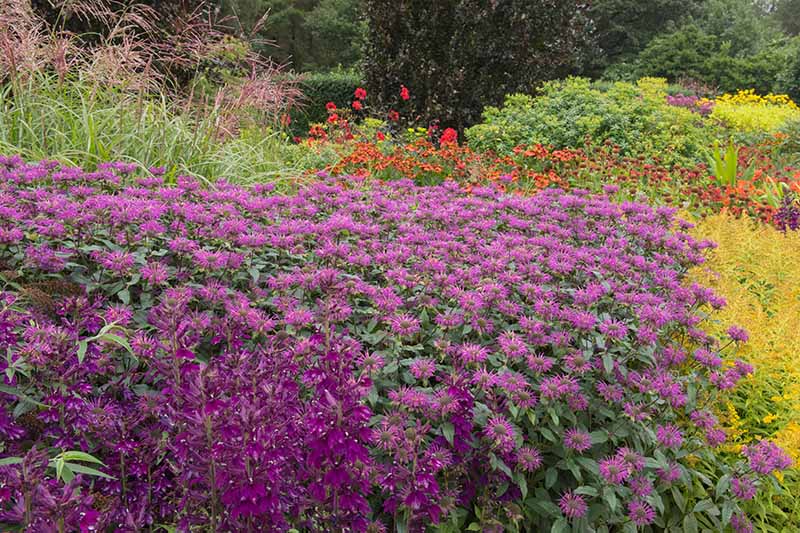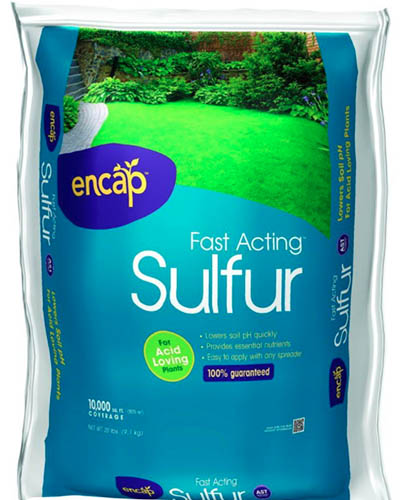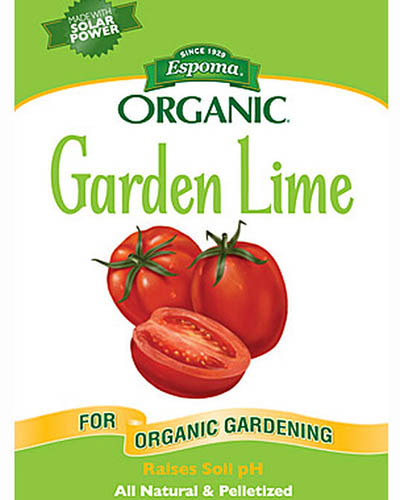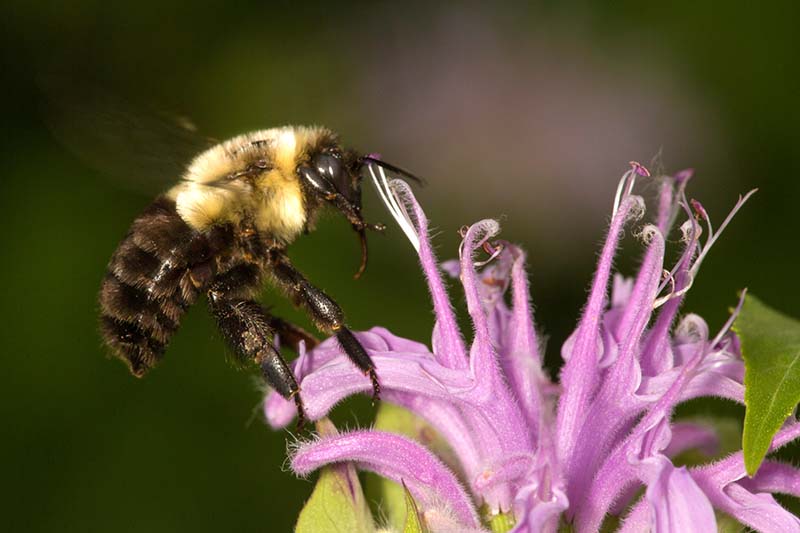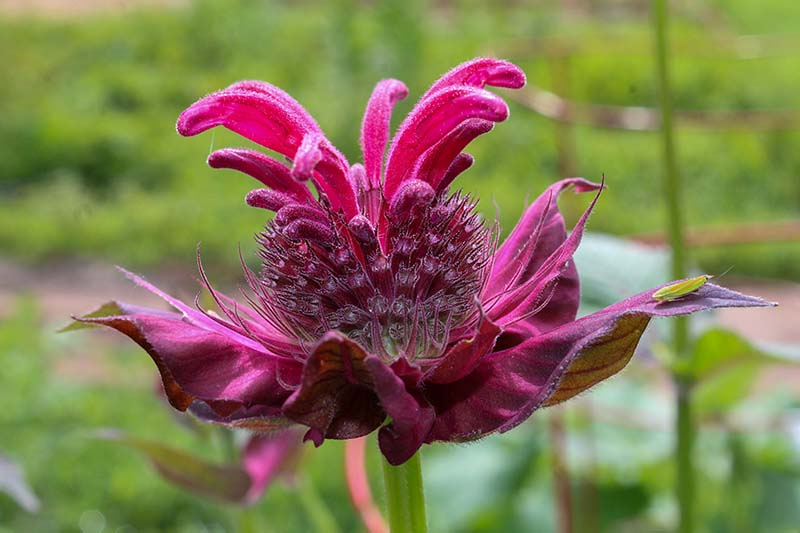Bee balm (Monarda spp.) is a perennial favorite in the garden, with several different species and hybrids available in various shades of purple, red, white, pink, and everything in between. Plants usually flower in July and August, with some species that may bloom as early as June (M. didyma) and some as late as September (M. punctate). We link to vendors to help you find relevant products. If you buy from one of our links, we may earn a commission. Whether your plants are growing in the wrong climate, or they’re suffering from problems related to soil nutrients or pH, lighting, irrigation, pests, disease, old age, or overcrowding, there may be something you can do to remedy the situation. I’ll go over each of these issues in this article and explain how to pinpoint what your problem is and how to fix it. Although bee balm isn’t the fussiest plant around, it still has specific needs that must be met for it to produce an abundance of healthy blooms. Read on and we’ll go over the common issues, with an extra bonus tip for boosting bloom time at the end.
1. Climate
Different species of Monarda grow best in different USDA Hardiness Zones, ranging from 4 to 10. M. didyma is suited to Zones 4-10, for example, while M. clinopodia grows well in Zones 4-8, and M. citriodora is happiest in Zones 5-9.
If you attempt to grow bee balm outside its suited zones, it may survive for some time, or even for many years – but it may not do well enough to flower every year (or ever). Besides the region and climate where you’re growing, there are other factors to consider too. For example, if you’re at the lower end of a species or cultivar’s hardiness range and your plant is growing in a particularly cold, exposed position when a colder than usual winter hits, this may impact the health of your plant. Unhappy plants will produce few or no blooms. Likewise, if your climate is extremely humid with long, hot summers, your plants may be suffering even though your area is listed as being within their suggested growing range. First, check to make sure the species or cultivar you’re growing is suited to your area. If not, look for one that is, and experiment with different varieties to see what works in your particular climate.
2. Improper Sun
One of the most common issues that impedes flowering is a lack of sun. Bee balm requires full sun, with a minimum of six to eight hours per day needed for most varieties to bloom to their full potential.
Less light may be fine in some cases, with three to six hours working well for many varieties to produce decent blooms. Unfortunately, the exact number of hours a given variety needs aren’t typically spelled out beyond a general description of “full sun to part shade,” so you’ll have to look for signs of sunlight deficiency in your plants to determine whether this is the issue. The main indicator that your plants are lacking light is that they’ll be tall and leggy, perhaps with a tendency to fall over in the wind. Besides the direct impact this has in failing to provide enough energy for them to grow and flower, a lack of sun can also make bee balm more susceptible to fungal diseases like powdery mildew and root rot – which we’ll go over in more detail below. The only ways to solve this problem are to transplant plants to a location with enough light, or to trim whatever’s blocking their light. On the flip side, if your plants are getting too much sun, this can also stress them and lead to dehydration and heat damage. In this case, you’ll notice your plants drooping a lot, and leaves may even turn from yellow to brown and die. This is most notably an issue in areas with particularly hot, dry summers. Sun saturation can be mitigated by planting a larger shade plant nearby to give your Monarda a reprieve from the afternoon sun, as well as by ensuring they get enough water (more on this below).
3. Overfertilization
Bee balm is generally a light feeder, and too much nitrogen can cause plants to put their energy into leafy growth at the expense of flowers.
Indeed, this can be a problem with most plants. I once fertilized a tomato plant so much when I first started gardening that I ended up with a six-foot-tall shrub that never produced a single flower or fruit! In the case of bee balm, too much fertilizer, especially nitrogen, may also make the plant more susceptible to powdery mildew due to the increased overall size and lack of airflow between plants. If your plants seem to be exploding with lush green growth yet they still fail to flower, this is likely your issue. Observing excess green growth is a pretty clear indication that this is probably what’s going on, and you can confirm this with a soil test. To tie up excess nitrogen in the soil, work in carbon-rich material at least a couple of inches deep, and keep a good layer of mulch four to six inches deep around plants on top of the soil as well. This could include seed-free straw, leaves, or hardwood shavings. Adding carbon-rich materials to the soil feeds microorganisms that will in turn pull nitrogen from the soil to build their tissues, thereby making the nitrogen unavailable to plants. If you opt to use wood shavings, don’t use shavings from coniferous trees as these contain natural biochemicals that can slow other plants’ growth. Likewise, any walnut species, as well as chestnut, hackberry, or other known allelopathic plants should not be used.
4. Nutrient Deficiency
If you have poor soil fertility in general, your plants will likely show stunted growth and/or discoloration, will tend to be more susceptible to pests and disease, and – you guessed it – they may not flower.
If you suspect a lack of fertility is the problem, you should immediately do a soil nutrient test and seek to balance the inadequate nutrients using an organic fertilizer that is high in whatever is missing. If plants look otherwise healthy but simply do not flower, it could be that your soil fertility isn’t horrible – it might just be low in phosphorus, the most common nutrient deficiency to prevent flowering. Again, be sure to test to make sure your soil is low in phosphorus before fertilizing, as overfertilization can result in other nutrient imbalances, and excess phosphorus is a potential pollutant.
5. Poor Soil Health
Even if your soil shows ideal fertility levels with nutrient tests, those nutrients may not be available to your plants if your soil pH or soil health is generally off. Even after it seems to have stabilized, the soil may tend towards a particular pH over time due to the composition of the underlying parent material – or basically, via the rock on which your soil rests.
20-Pound Fast-Acting Sulfur, Available from Home Depot It may be necessary to amend your soil with lime if the pH is too low, or use agricultural sulfur if the pH is too high, following the recommended guidelines on the product.
Garden Lime, Available from Burpee Unfortunately, if the pH of your soil is not suitable for growing bee balm now, you’ll likely need to monitor it on an ongoing basis and amend it as often as once per year. Meanwhile, if your soil has few microorganisms to help make nutrients bioavailable, or the soil is too compacted for roots to grow and get enough oxygen, water, and/or nutrients, your plants will also suffer. A lack of beneficial microorganisms can be solved by working at least two inches of compost into your soil, with ongoing additions of mulch to keep the soil covered by about four to six inches. Compacted soil should be broken up with a broad fork or garden fork prior to planting, and after loosening the soil, you should avoid walking on it. I like to create “double reach” beds where I can reach the center from both sides via pathways.
6. Improper Water
With its shallow roots, bee balm isn’t known as the most drought tolerant of plants.
In fact, I use Monarda as an indicator plant in my garden to tell me when I need to water, since theirs are among the first leaves to begin drooping during a dry spell. If your plants have experienced prolonged dry periods and their leaves and upper stems are flopping sadly in the breeze, give them a good watering once a week. Water should penetrate to a depth of at least six to eight inches. The aforementioned compost and mulch will also help with water retention. Bee balm prefers evenly moist soil with good drainage, so it’s also possible to overwater plants, especially if you have clay soil, which holds water well. This can cause fungal issues, as alluded to above, including powdery mildew and root rot. More on these below.
7. Pests and Disease
Any number of pests or diseases can set your plants back enough that they won’t bloom. Common pests that affect bee balm include aphids, spider mites, and stock borers, while diseases include the aforementioned powdery mildew. See our bee balm growing guide for information on how to identify and treat these. Regarding root rot: if your plants receive plenty of water but they are still drooping, and the soil is adequately fertile but they are still discolored, root rot could be the cause. It can be detected by digging into the root zone of your plants and removing some roots from a few areas. Rinse the soil off, and take a look. If they are brown and slimy, your plants have root rot. The best way to prevent root rot is to avoid overwatering in the first place and ensure your plants are growing in soil that drains well.
8. Old Age and Overcrowding
After about three years of growing in the same place, many perennials – including bee balm plants – tend to become overcrowded and may lose some of their vigor, particularly in the middle of the clump.
Exel Systemic Fungicide Concentrate Keep in mind that certain types of fungi can develop resistant to fungicides. Read more about this potential issue here.
To revitalize your plants, dig them up and discard older, woodier portions. Divide the rest into clumps with root systems at least six inches wide with at least two or three shoots attached. Keep the roots moist until replanting that same day. For more information, read our guide to dividing perennials.
9. Already Flowered
As with most plants, bee balm only puts a certain amount of energy into flowering in a given year. Once it has accomplished its reproductive goal of producing seed, it’s done for the season. The trick, then, is to stop it from producing seed by continually removing all spent flowers. This is referred to as “deadheading,” and will often result in a second flush of flowers later in the summer. To deadhead bee balm, use disinfected handheld pruning shears to cut the tops off of each stem that holds a dried up flower. Make cuts directly below the leaf bud closest to the top of the stem.
There’s probably something wrong, and the lack of flowers might be a sign of a deeper issue. By assessing the situation to look for clues as to whether it’s an issue of climate, sun, nutrients, poor soil health, water, overcrowding, pests, or disease, you can get to the root of the problem and have your plants blooming by next season – or sooner! And for more information about growing and caring for bee balm, add these to your reading list next:
How to Grow Bee Balm: Bring out the Hummingbirds! Bee Balm Propagation 101 Is Bee Balm Invasive? How to Control Monarda
© Ask the Experts, LLC. ALL RIGHTS RESERVED. See our TOS for more details. Product photos via Burpee, Growershouse, and Home Depot. Uncredited photos: Shutterstock. With additional writing and editing by Allison Sidhu.
